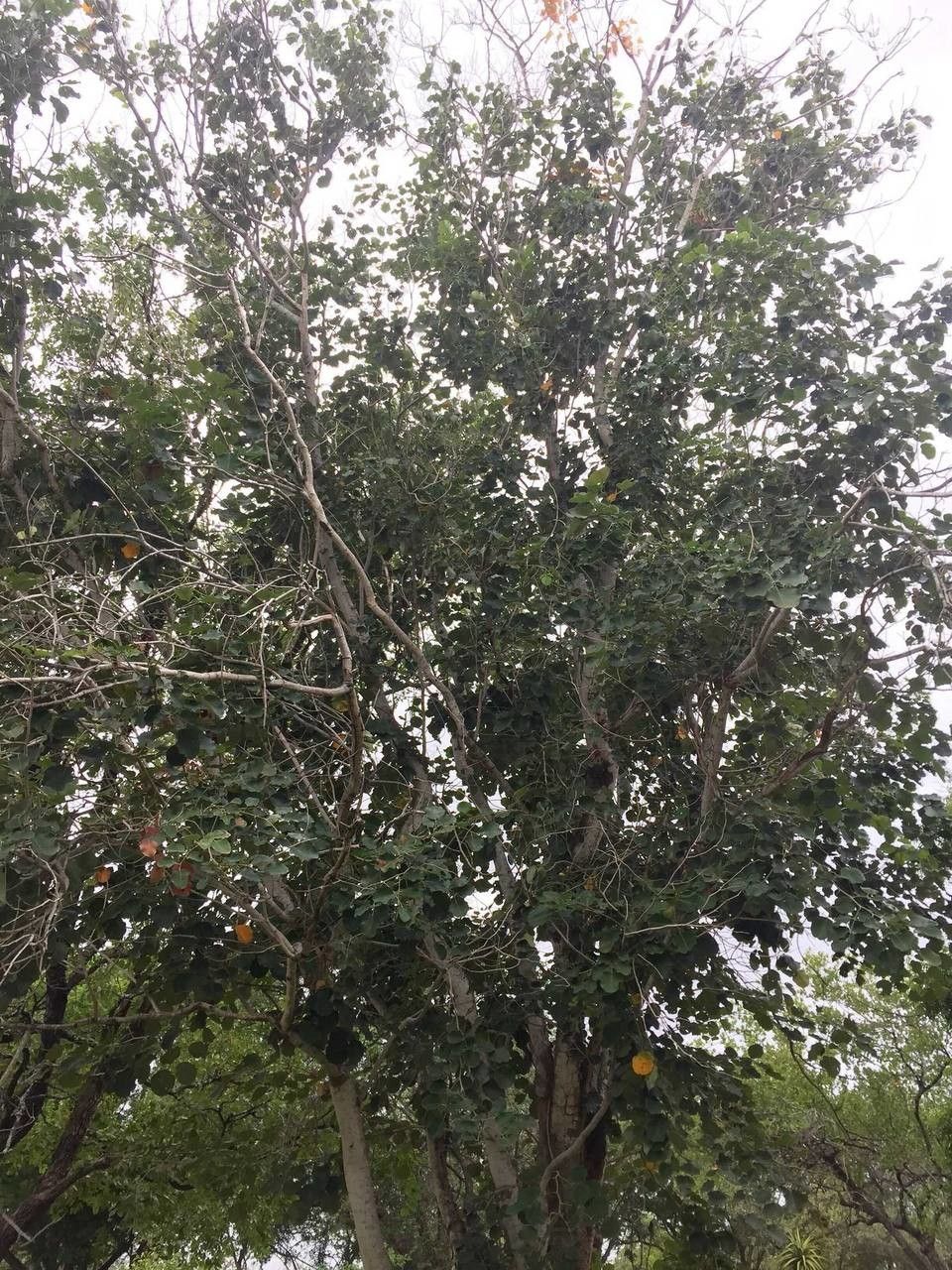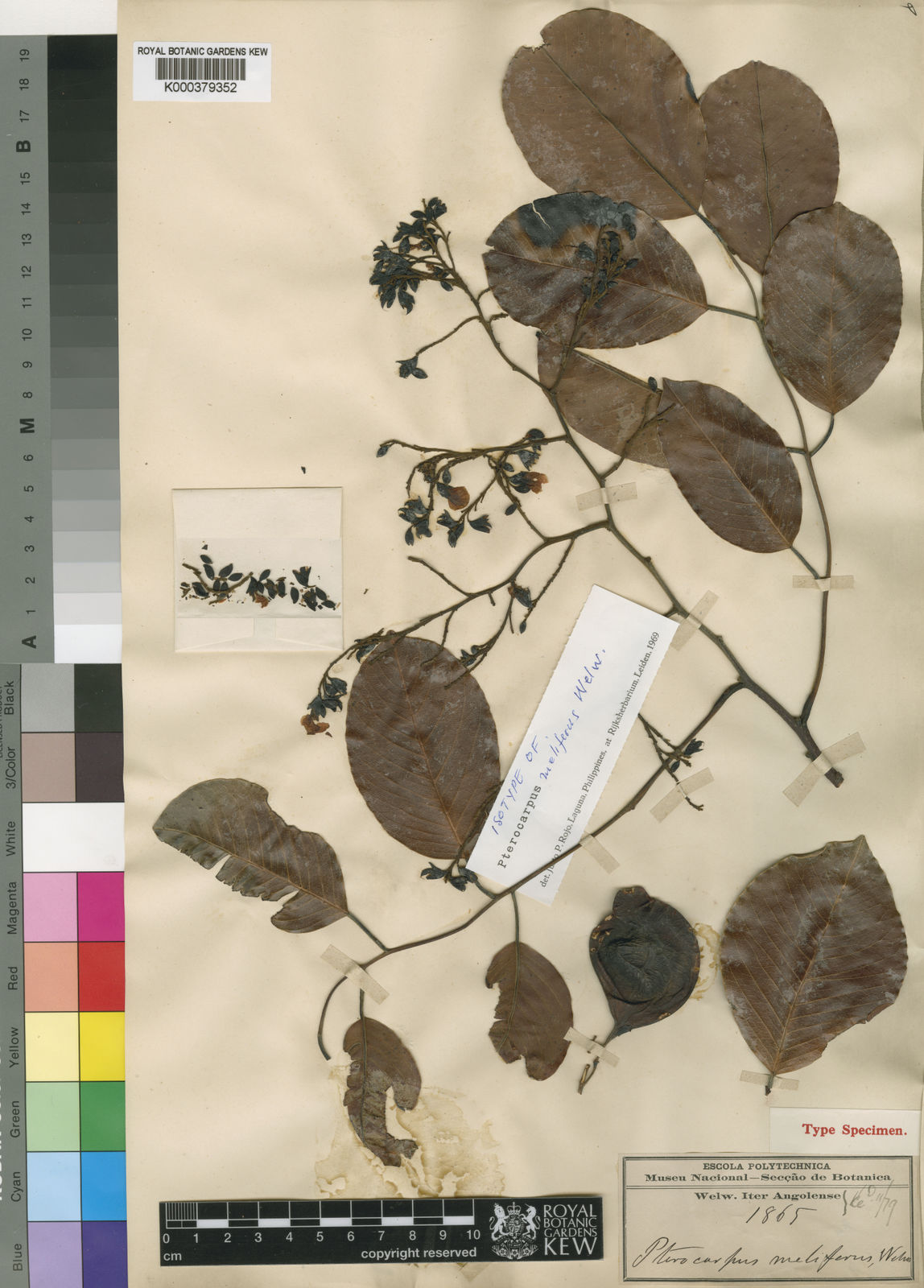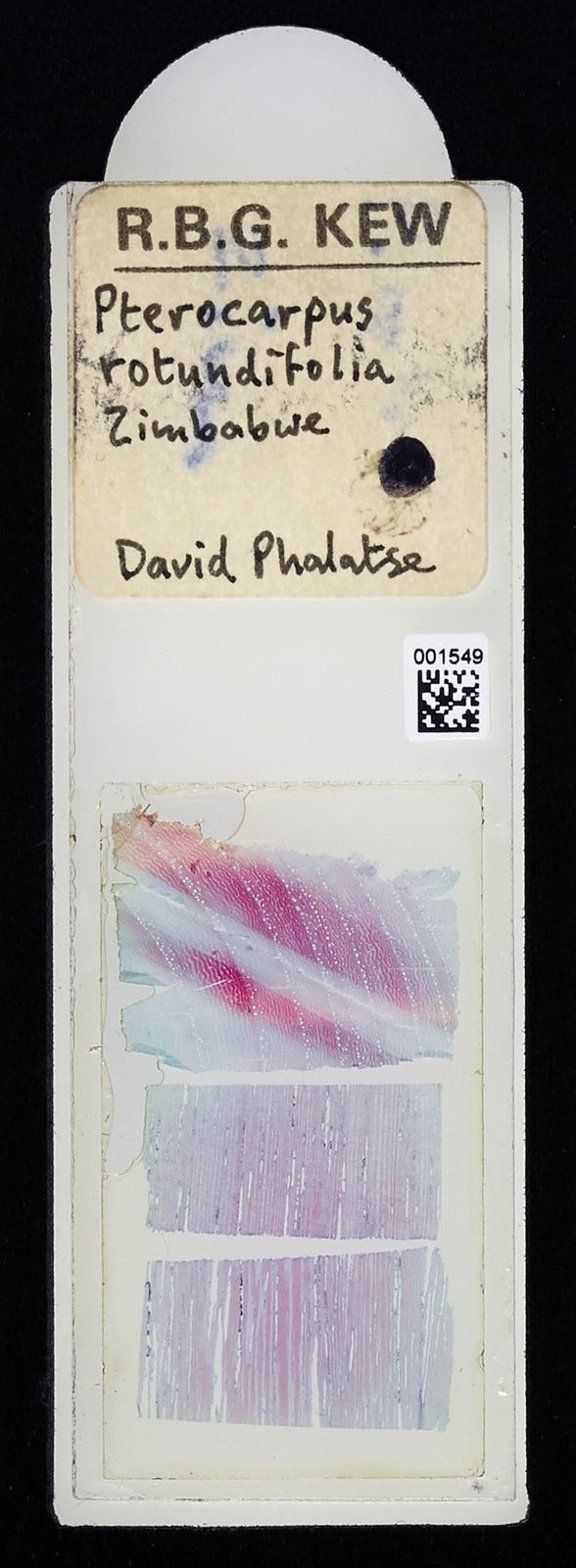Round-leaved Pterocarpus
pterocarpus rotundifolius
Also known as: ["Round-leaved Pterocarpus","African Rosewood"]
Overview
A deciduous tree native to tropical Africa, known for its round leaves and hard, reddish wood.
Benefits & Perks
["drought tolerant","shade tolerant","wildlife attractant (bees, butterflies, birds)"]
Botanical Classification
| Phylum: | Magnoliophyta |
| Class: | Magnoliopsida |
| Order: | Fabales |
| Family: | Fabaceae |
| Genus: | Pterocarpus |
| Botanical Name: | Pterocarpus rotundifolius |
Plant Characteristics
Basic Information
- Category: Trees
- Suitable Location: outdoor garden in tropical or subtropical regions
- Suitable For:
- Is Weed: No
- Allergenicity: low
Environmental Needs
- Climate: {"temperatureRange":"15–35°C"}
- Hardiness: {"zones":"9–11"}
- Misting: rarely required, only if ambient humidity is very low
- Drainage: Fast-draining to prevent waterlogging.
- Soil Type: Well-draining potting mix with added perlite or sand for aeration.
Maintenance Level
- Maintenance Level: moderate
- Toughness Level: high
- Pruning Frequency: Annually or every 2 years, or as needed to remove dead/diseased growth.
- Pruning Intensity: Moderate; remove up to one-third of old growth to rejuvenate the plant.
Care Details
Ideal Sunlight Coverage:
Bright indirect light for 6–8 hours daily; can tolerate some direct morning sun but avoid harsh afternoon sun.
Sunlight Tolerance Tips:
Acclimate gradually to direct sun to prevent scorching; place indoors near east-facing windows or under shade cloth outdoors; avoid prolonged exposure to intense midday sun.
Care Requirements
Care Difficulty
moderatemoderate
Sunlight
full sun to partial shade
Rotate plant weekly for even light exposure; use sheer curtains to filter intense sunlight; adjust light exposure seasonally.
Watering
every 7–10 days during growing season, reduce in winter
Water thoroughly until it drains from the bottom, allow soil to dry between waterings, avoid overwatering especially in winter.
Soil
well-draining, loamy soil with moderate organic content
pH: Slightly acidic to neutral (pH 6.0–7.0).
Use a mix of cactus soil and regular potting soil, avoid heavy clay soils, check drainage by watering and observing runoff.
Temperature
Prefers warm temperatures between 65–85°F (18–29°C); tolerates mild seasonal fluctuations but avoid prolonged exposure to extreme cold or heat.
Monitor room temperature, avoid placing near heating/cooling vents, adjust care based on seasonal changes.
Fertilizing
every 4–6 weeks during active growth
Always water before fertilizing to prevent root burn; flush soil occasionally to prevent salt buildup; adjust frequency based on plant growth.
Propagation
Methods
Stem cuttings or seed; stem cuttings are more common for home growers.
Step-by-Step Propagation Guide
- Take a 4–6 inch cutting with at least 2 nodes, let it callus for a day, dip in rooting hormone, plant in propagation medium, keep moist and warm.
Best Time: Spring or early summer when the plant is actively growing.
Environment
Warm, humid environment with indirect light; maintain temperatures around 75–80°F (24–27°C).
Medium
Well-draining mix of perlite and peat moss or cactus mix.
Hormone
Recommended to use rooting hormone to improve success rate.
Timeline
Roots may develop in 4–8 weeks; new growth may take 2–4 months.
Tools Needed
Pruning shears, rooting hormone, small pots, propagation medium, plastic bags or humidity dome.
Quick Tips
Use healthy, non-flowering stems for cuttings; maintain high humidity to prevent drying; avoid direct sunlight during rooting.
Pruning & Repotting
Pruning Guide
Method
Selective pruning of long or leggy stems, pinch back tips to encourage branching, remove crossing or crowded branches.
Pruning Plan
Prune to maintain shape, encourage bushier growth, and remove dead or diseased parts; focus on structural improvement and health.
Tools
Pruning shears, sterilizing solution, gloves.
Checklist
Sterilize tools, prune during dormancy or active growth, make clean cuts just above nodes, dispose of clippings properly.
Repotting Guide
Best Season
Spring, before the growing season begins.
Pot Size
Choose a pot 1–2 inches larger in diameter than the current one.
Method
Remove plant gently, trim any circling roots, place in a new pot with fresh soil, water thoroughly after repotting.
Suggestions
Repot every 2–3 years or when roots fill the pot; beneficial for root health and growth.
Checklist
Check root bound status, prepare new pot with drainage, trim roots if necessary, use fresh soil mix, water after repotting.
Advanced Care Tips
Watering Mastery
Watering Checklist
Check soil moisture, water deeply, ensure drainage, adjust for season.
How to Apply Water Properly
Water directly at the root zone, ensure water penetrates deeply to reach the root ball, allow excess water to drain completely, water in the morning to reduce evaporation and fungal risk.
Watering Schedule Tips
Water deeply once the top 1–2 inches of soil are dry; reduce frequency in winter to prevent root rot.
Soil Improvement
Add perlite or coarse sand to improve drainage, incorporate organic matter like compost for fertility, ensure pots have drainage holes.
Temperature Stress Management
Signs of Temperature Issues
Yellowing or dropping leaves (cold stress), wilting or leaf scorch (heat stress), slowed growth or bud drop.
Cold Stress
Low temperatures slow metabolic processes, reduce water uptake, and can lead to root damage or fungal infections.
Solution: Move plant to a warmer location, insulate pots with bubble wrap, avoid cold drafts, reduce watering in cold conditions.
Hot Stress
Excessive heat increases transpiration, leading to dehydration, leaf scorch, and potential heat shock.
Solution: Provide shade during peak heat, increase humidity with misting or pebble trays, water more frequently but avoid waterlogging, ensure good air circulation.
Fertilizing Guide
Fertilizing Checklist
Check growing season, dilute fertilizer, water before application, stop in winter.
Fertilizing Method
Use balanced liquid fertilizer diluted to half strength every 4–6 weeks during growing season (spring/summer); cease fertilizing in fall/winter.
Common Problems & Solutions
Toxicity Warning
Cats
Non-toxicPterocarpus rotundifolius is not considered toxic to cats. The plant has no known adverse effects on feline health.
⚡ Toxic If:
Generally non-toxic
Dogs
Non-toxicPterocarpus rotundifolius is not considered toxic to dogs. There are no documented cases of toxicity in canines from exposure to this plant.
⚡ Toxic If:
Generally non-toxic
Humans
Non-toxicPterocarpus rotundifolius is not considered toxic to humans under normal circumstances. The plant has no known toxic effects on human physiology.
⚡ Toxic If:
Generally non-toxic
Frequently Asked Questions
Q: Is Pterocarpus rotundifolius suitable for indoor cultivation?
A: No, it is a large tree best suited for outdoor landscapes.
Q: Does this plant have any medicinal uses?
A: Traditional uses include treating certain ailments, but scientific validation is limited.
Q: How fast does Pterocarpus rotundifolius grow?
A: It grows at a moderate rate, typically reaching maturity over several years.
Quick Reference
| Family: | Fabaceae |
| Care: | moderate |
| Light: | full sun to partial shade |
| Water: | every 7–10 days during growi |
Get Expert Care Tips
Download the Plantious app for personalized care reminders and plant identification!
Google Play App Store








